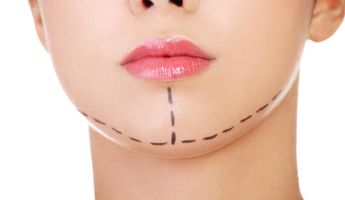Mentoplasty in Nepal
Search and Compare the Best Clinics and Doctors at the Lowest Prices for Mentoplasty in Nepal

Find the best clinics for Mentoplasty in Nepal
No clinics available
Egypt offers the best prices Worldwide
Price: $ 432

- Home
- Nepal
WHY US?
At Medijump, we're making medical easy. You can search, compare, discuss, and book your medical all in one place. We open the door to the best medical providers worldwide, saving you time and energy along the way, and it's all for FREE, no hidden fees, and no price markups guaranteed. So what are you waiting for?

Free

Best Price

Widest Selection

Risk-Free
What you need to know about Mentoplasty in Nepal

Mentoplasty also referred to as chin surgery, is a surgical procedure that reshapes the chin by reduction surgery of the bone or enhancement with an implant. It is a plastic surgery done to improve the proportions of someone’s face or to correct malformations of the chin that results from developmental abnormalities. It may also be performed as part of gender reassignment surgery, craniofacial reconstruction, or orthognathic surgery.
What does a Mentoplasty Procedure Involve?
There are two categories of mentoplasty: chin augmentation and reduction. Chin augmentation is the more common procedure, which involves inserting an implant under the skin of the chin or carrying out a sliding genioplasty. With chin reduction, the overly large or protruding chin is corrected by removing excess bone from the chin with a burr. Both of these categories are performed under general anesthetic.
How Long Should I Stay in Nepal for a Mentoplasty Procedure?
Mentoplasty can be performed as an outpatient procedure, but you should plan to stay in Nepal for a minimum of 7 days or until your surgeon says it is okay for you to go home. During your stay, you will have to rest as much as possible for the initial recovery and to attend follow-up checkups.
What's the Recovery Time for Mentoplasty Procedures in Nepal?
Most people can resume work and light activities in 1 week, but you should avoid any strenuous activities, including vigorous physical exercises for about two weeks.
What sort of Aftercare is Required for Mentoplasty Procedures in Nepal?
During your recovery period, make sure you eat a soft or liquid diet, keep your head raised when in bed, and rinse your mouth with a solution of hydrogen peroxide. It is advisable to avoid sleeping face down and touching your face too much.
What's the Success Rate of Mentoplasty Procedures in Nepal?
Most patients who have had this procedure said they were very satisfied with the results. The complication rate is about 5%. The side effects and risks associated with this procedure involve deformity of the chin, erosion of the bone beneath the implant, under or overcorrection of the defect, damage to the roots of the teeth, hematoma, and infection.
Are there Alternatives to Mentoplasty Procedures in Nepal?
Surgery is not for everyone and if you are not an ideal candidate for mentoplasty, you can undergo fat injections or facial liposuction.
What Should You Expect Before and After the Procedure
Before the surgery, you may have chin deformity that causes discomfort or make you feel unconfident. After the surgery, any facial asymmetry will be corrected and your self-esteem may be enhanced. Also, the function of your jaw will improve.
Whilst the information presented here has been accurately sourced and verified by a medical professional for its accuracy, it is still advised to consult with your doctor before pursuing a medical treatment at one of the listed medical providers
No Time?
Tell us what you're looking for and we'll reachout to the top clinics all at once
Enquire Now

Popular Procedures in Nepal
Prices Start From $70

Prices Start From $16

Prices Start From $1,945

Prices Start From $672

Prices Start From $101

Prices Start From $5

Recommended Medical Centers in Nepal for procedures similar to Mentoplasty

- Interpreter services
- Translation service
- Religious facilities
- Medical records transfer
- Medical travel insurance
- Health insurance coordination
- TV in the room
- Safe in the room
- Phone in the room
- Private rooms for patients available

- Interpreter services
- Translation service
- Religious facilities
- Medical records transfer
- Medical travel insurance
- Health insurance coordination
- TV in the room
- Safe in the room
- Phone in the room
- Private rooms for patients available

- Interpreter services
- Translation service
- Religious facilities
- Medical records transfer
- Medical travel insurance
- Health insurance coordination
- TV in the room
- Safe in the room
- Phone in the room
- Private rooms for patients available

- Interpreter services
- Translation service
- Religious facilities
- Medical records transfer
- Medical travel insurance
- Health insurance coordination
- TV in the room
- Safe in the room
- Phone in the room
- Private rooms for patients available
Mentoplasty in and around Nepal
Introduction
Nepal is a country in South Asia, sandwiched between India and China. Home to the mighty Mount Everest, this incredible country has diverse landscapes, from the Himalayan Mountains in the north to the sprawling plains in the south. Towering mountains, charming hill villages, golden mountains, and jungle wildlife, Nepal is truly one of the world’s best travel destinations. Beyond its nature and culture, this country is also increasingly popular for its healthcare. With its affordable high-quality medical facilities, Nepal is considered to have immense potential for medical tourism, due to the availability of good infrastructure, highly trained specialists, modern medical equipment, and relatively cheaper medical treatment. In fact, it’s currently the fastest-growing segment of the country’s tourism. Medical tourists coming to Nepal are usually seeking exceptionally high medical treatment at competitive rates. Some of the most sought after procedures are dental treatments, cardiac services, and neurological treatments.
Popular Cities and Regions in Nepal
Kathmandu, the capital and largest city in Nepal, is historic, enticing, spiritual, and vibrant. One of the most famous attractions in the city is the old town, where tourists can find the most popular Tibetan pilgrimage site, the Kathesimbhu Stupa. Another top attraction is Kumari Bahal, which is the home of the Kumari, the girl who is selected to be the town’s living symbol of Devi. Tourists looking to relax in a more laid-back vibe usually go to Pokhara. Stretching along the shore of an idyllic lake, it offers spectacular scenery. It also boasts a thriving adventure-sports industry, from paragliding to paddle boats. Anyone who wants to experience an ancient way of life should visit Bhaktapur, which is filled with artisan weave cloths, amazing cuisine, and beautiful temples.
Transport in Nepal
The main international airport in Nepal is Tribhuvan International Airport, which serves flights to and from numerous cities in Asia, such as Delhi, Hong Kong, and Dubai. Getting around the country can be a challenge, but public transportation is available. Buses are affordable, however, they tend to be overloaded. Tourist buses are the best way to travel around as they are in good condition.
Visas in Nepal
Citizens of India do not need a visa to enter Nepal without restrictions. Citizens of almost all nations, including the US and all EU countries, can obtain a visa on arrival that is valid for up to 90 days. Only holders of passports from 12 countries, need to have a visa in advance.
Weather in Nepal
Nepal has five seasons. Spring starts in March until May, it offers pleasant weather that is not too cold nor too hot. Summer arrives in June and ends in August, bringing hot temperatures of around 28°C. Monsoon from June to September receives rain almost every day. Autumn and pre-winter bring sunny and pleasant weather, while winter can be very cold.
Additional Info
-
Local Currency: Nepali rupee (NPR) is the official currency. 1 USD converts to 115 NPR.
-
Money & Payments: ATMs are available in major cities, such as Kathmandu and Pokhara. Credit cards are accepted in major hotels and restaurants. Tipping is expected.
-
Local Language: The official language is Nepali. English is mainly spoken in tourism areas.
-
Local Culture and Religion: Hinduism and Buddhism coexist in Nepal peacefully. Islam, Kiratism, and Christianity are in the minority.
-
Public Holidays: Some of the most celebrated public holidays are Maha Shivaratri, Buddha Jayanti, Sambidhaan Diwas, and Bhaitika.
Popular Searches
- Plastic Surgery in Thailand
- Dental Implants in Thailand
- Hair Transplant in Thailand
- Breast Augmentation Thailand
- Gastric Sleeve in Thailand
- Gender Reassignment Surgery in Thailand
- Laser Hair Removal in Bangkok
- Botox in Bangkok
- Dermatology in Bangkok
- Breast Augmentation in Bangkok
- Coolsculpting in Bangkok
- Veneers in Turkey
- Hair Transplant in Turkey
- Rhinoplasty in Turkey
- Stem Cell Therapy in Mexico
- Rhinoplasty in Mexico
- Liposuction in Mexico
- Coolsculpting in Tijuana
- Rhinoplasty in Korea
- Scar Removal in Korea
- Gastric Sleeve in Turkey
- Bone Marrow Transplant in India
- Invisalign in Malaysia
- Plastic Surgery in the Dominican Republic
- Tummy Tuck in the Dominican Republic
- Plastic and Cosmetic Surgery in Poland
- Rhinoplasty in Poland
- Hair Implant in Poland
- Dental Implants in Poland
- IVF in Turkey